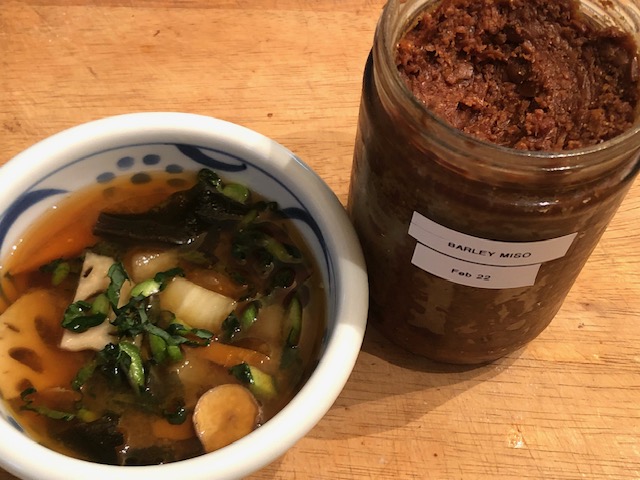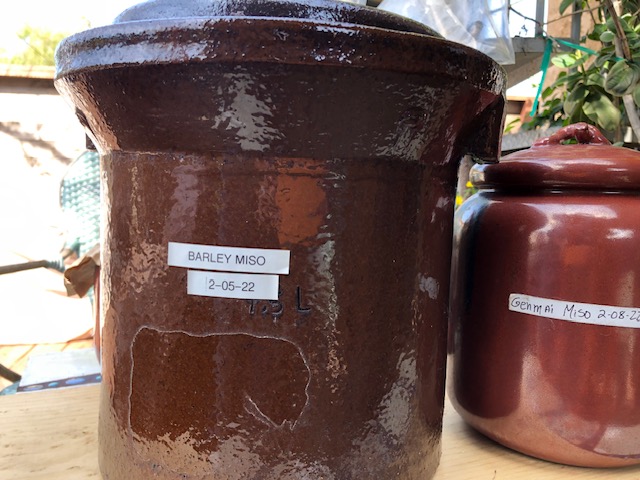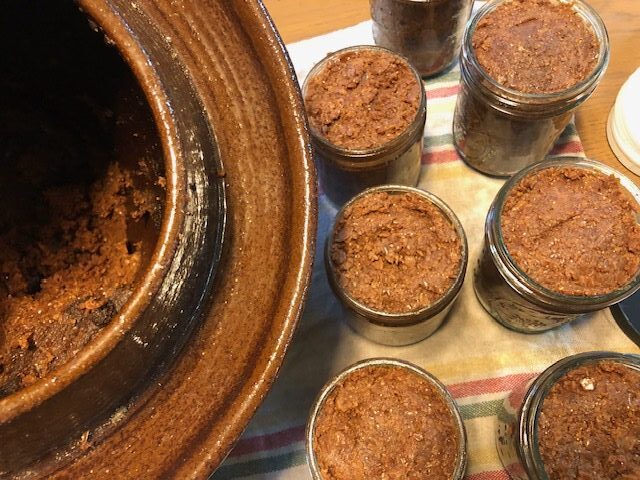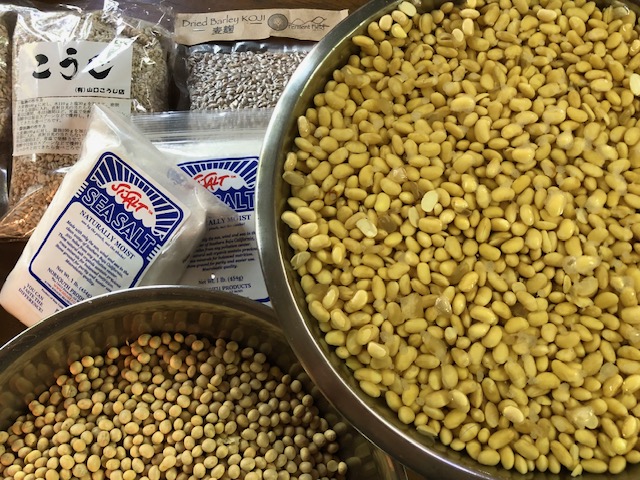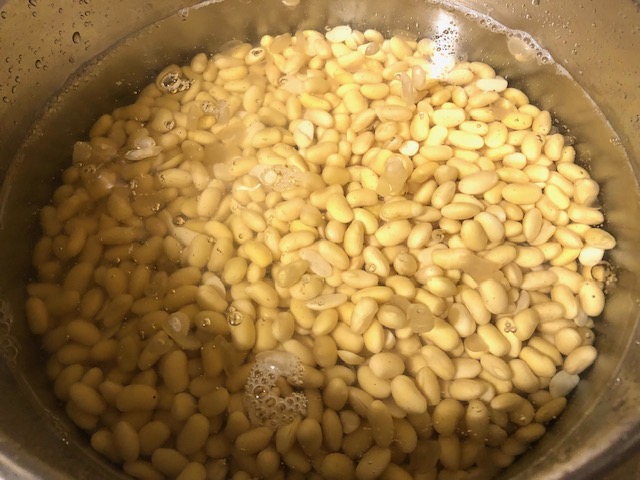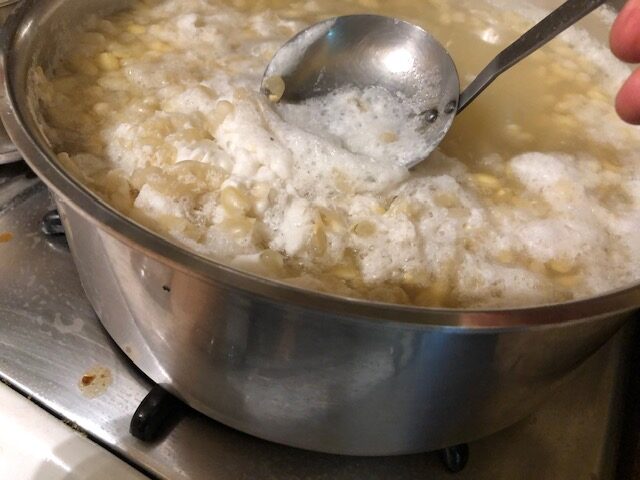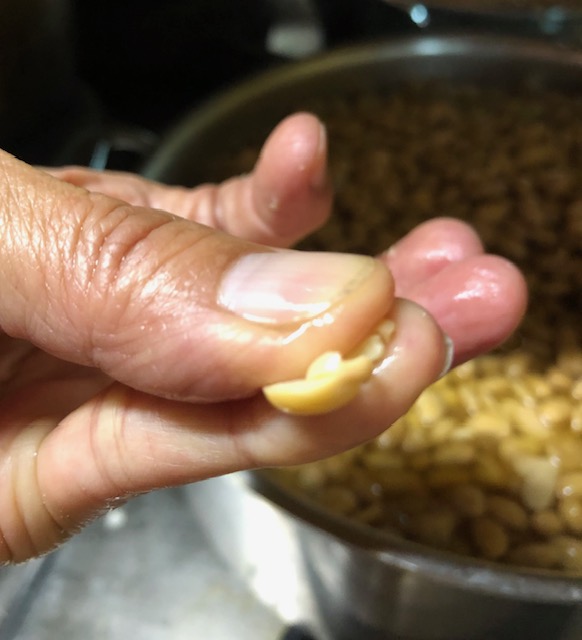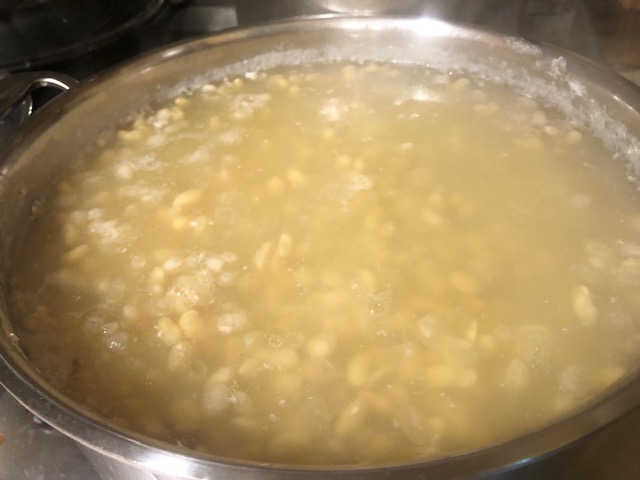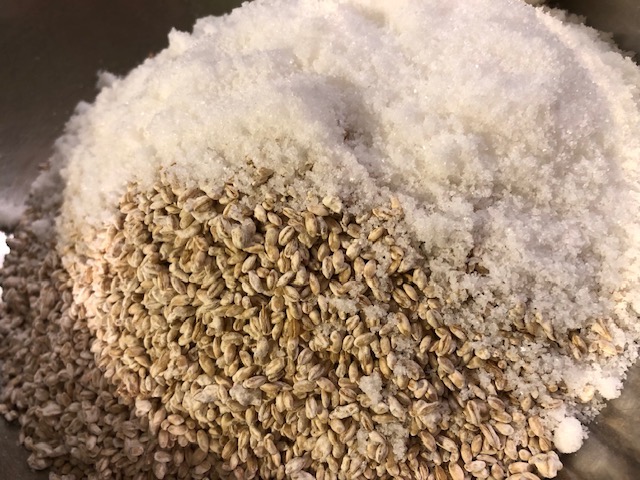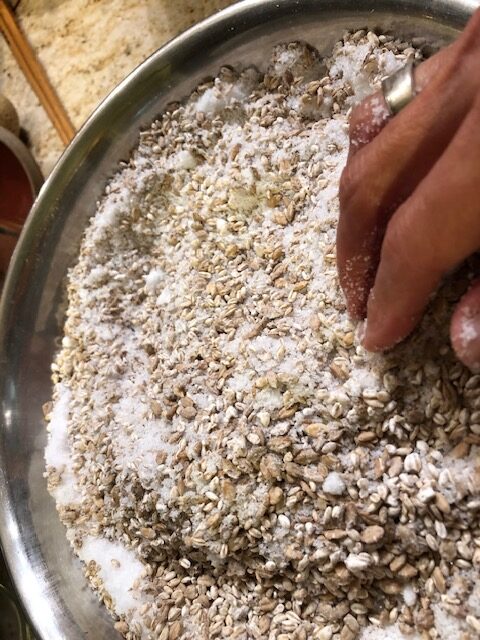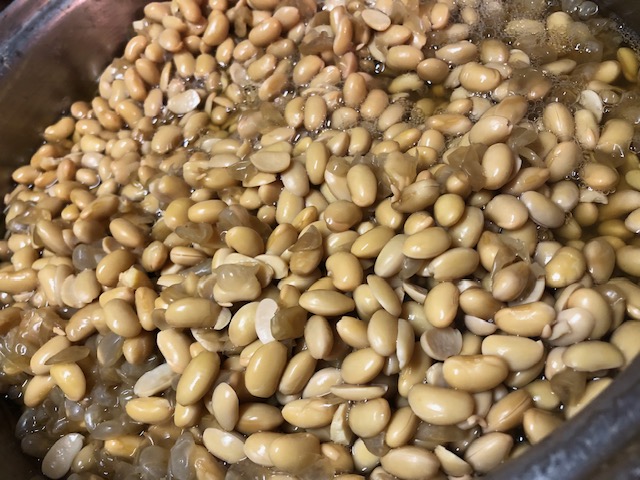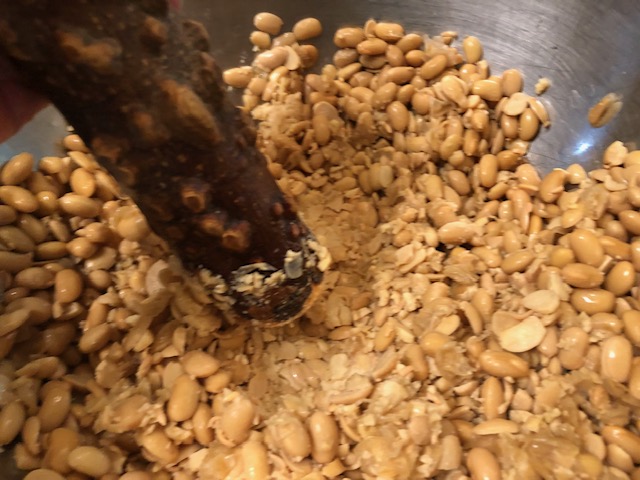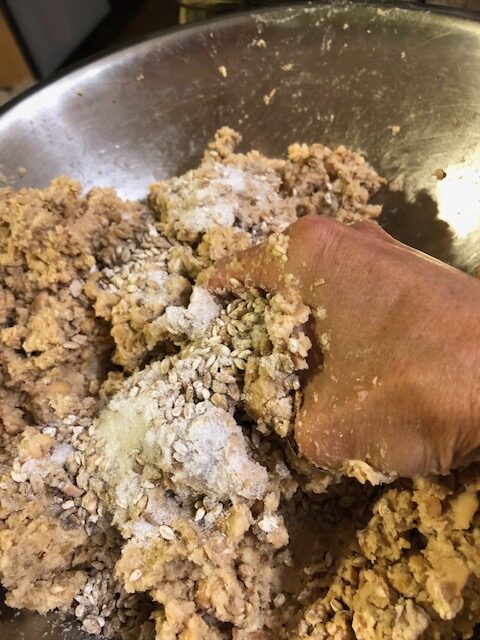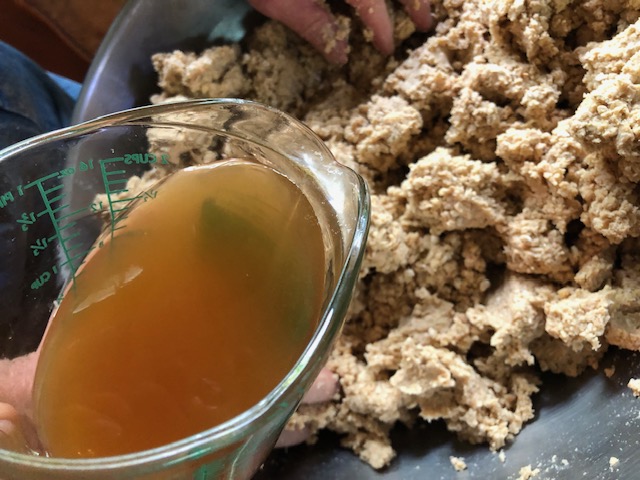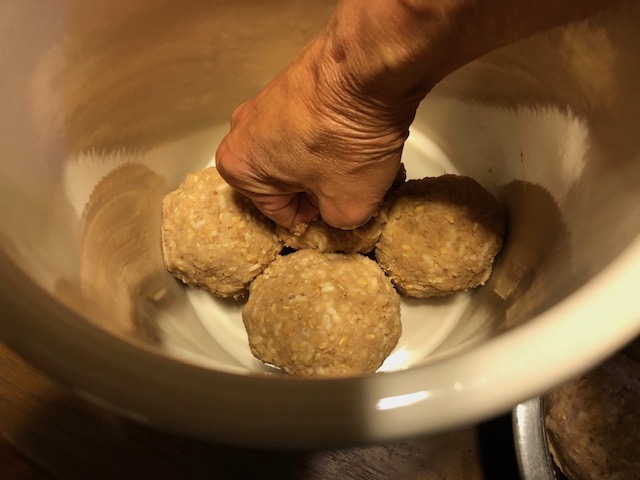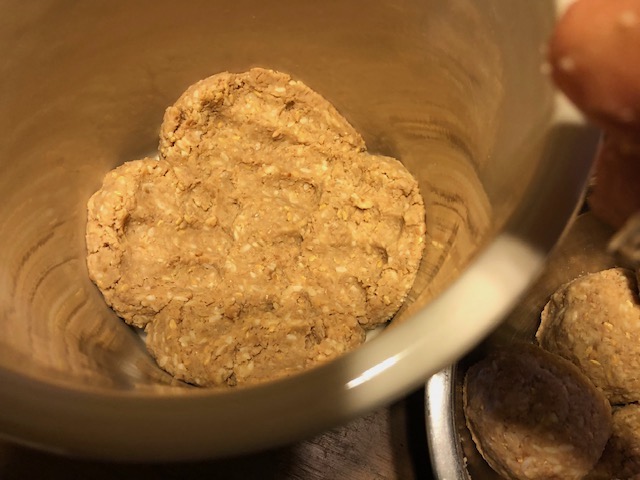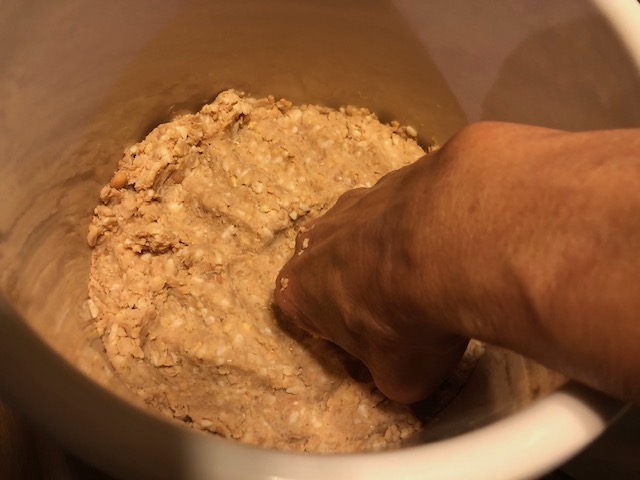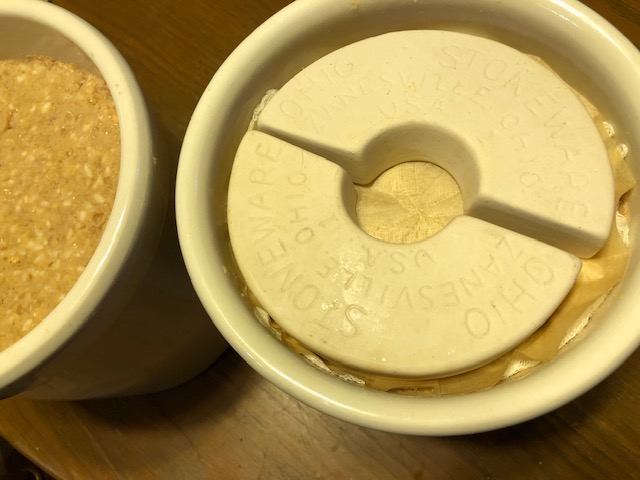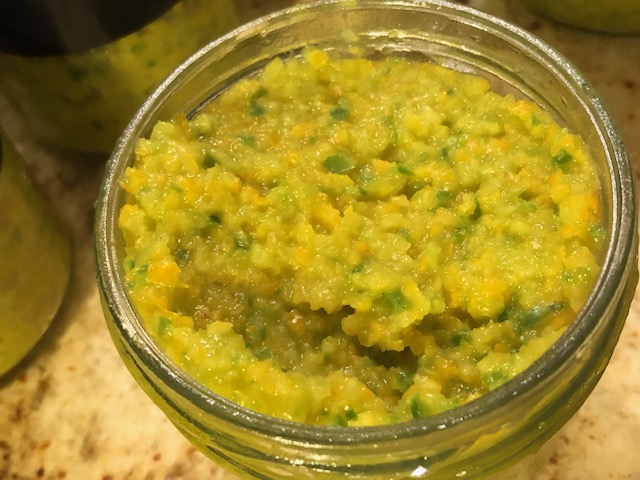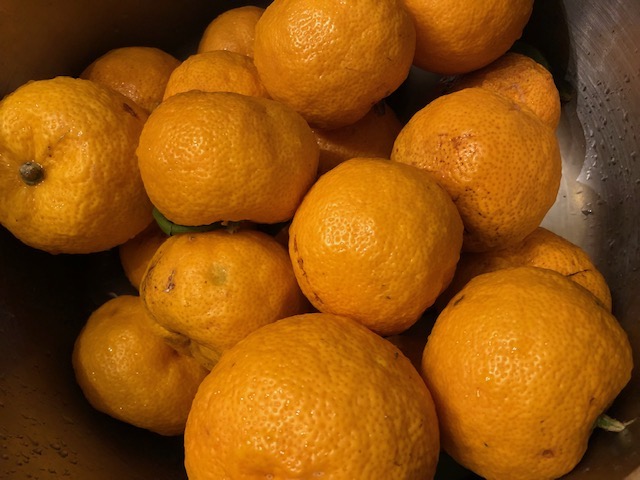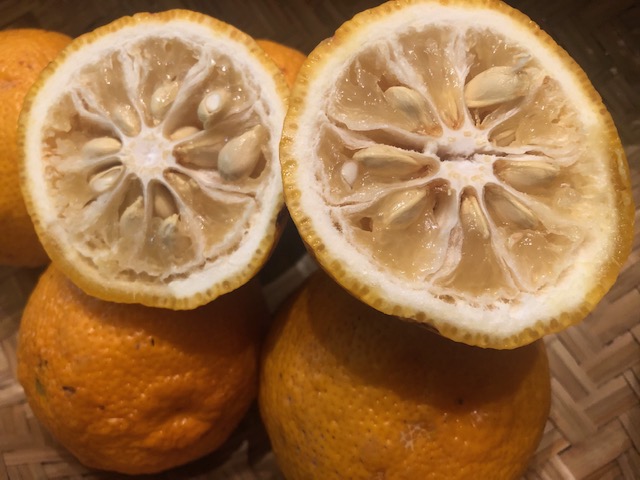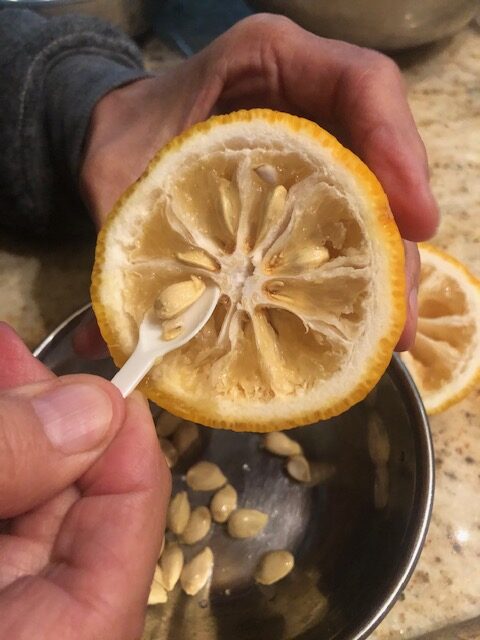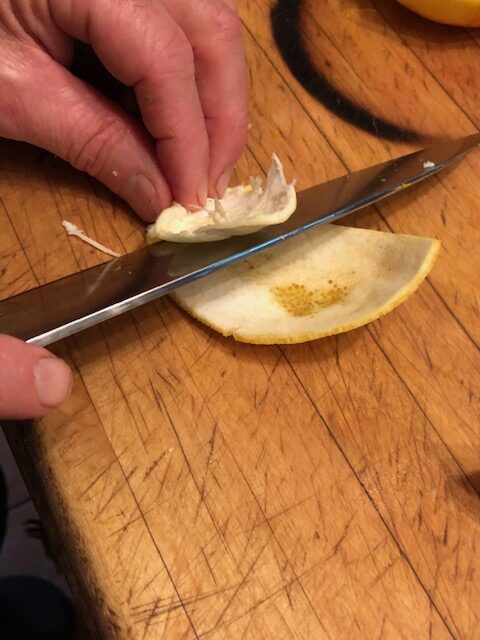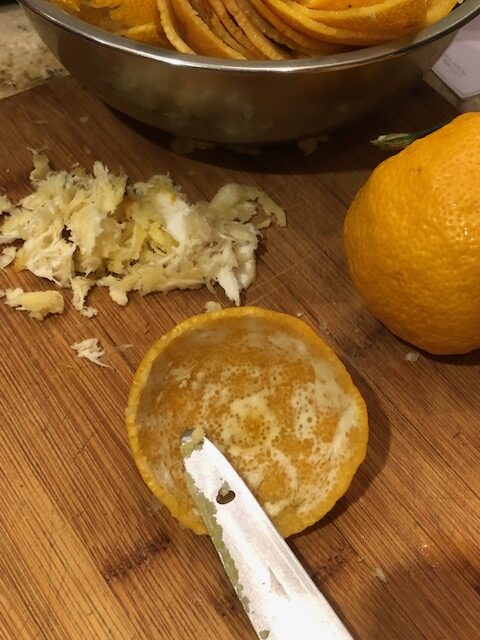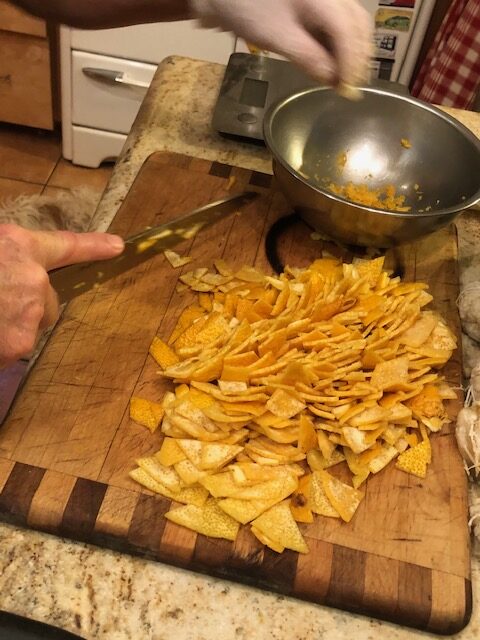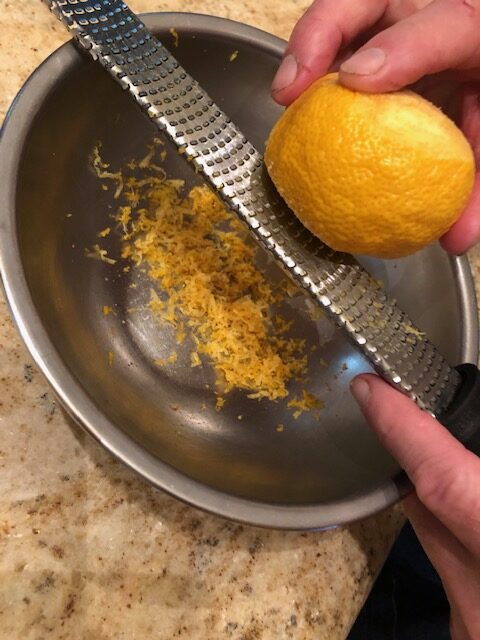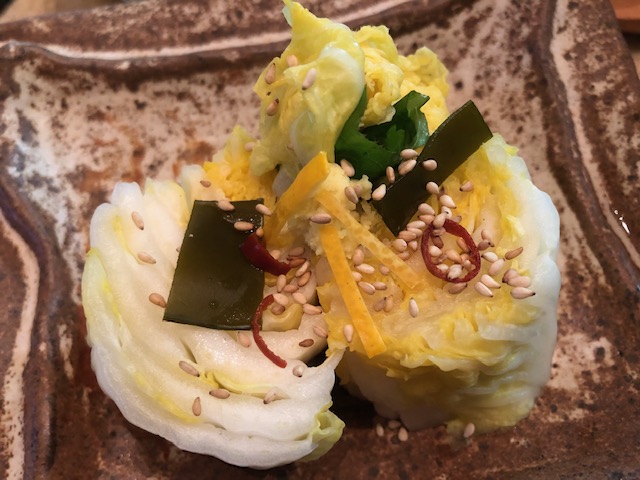
I have learned a lot since I moved to America, and the Five Elements of Macrobiotics were one of the significant lessons that changed my life.
I grew up in Japan, where people live seasonally.
The four seasons are commonly heard of, but traditionally people have lived by the five seasons of spring, summer, late summer, autumn, and winter, so it made sense to me.
It also reminded me of the *”seasonal hand-work” that my grandmother and mother used to do when I was little. *”seasonal hand-work” means making something with your hands each season.
I started to follow the seasonal rituals of Japanese tradition much later as I began to appreciate nature and season changes, even while living in Santa Monica in Southern California, where the five seasons are not as apparent.
Winter is not harsh here, but I noticed the contractions and tightness of the energy of the air and my own body so I appreciated the vegetables and fruits that grow in the winter.
Seasonal hand-work in January is making apple jam and citrus marmalade (usually mandarin). However, this year I made yuzu marmalade with my husband for the first time, and it came out very delicious. ), I also made kumquat syrup for sore throats.
February is miso-making. I make barley miso and rice miso in small amounts, and I feel the new year is here.
Then, spring suddenly emerges in Santa Monica and pushes winter out every year.
In spring the energy rises up, and the taste of sourness supports liver and gallbladder functions by the Five Elements.
I prepare my nuka doko (brown rice bran pickles bed/base)for nuka pickles: start roasting the new brown rice bran and adding it to the old nuka doko to prepare my nuka pickles for March.
I like daikon radish nuka pickles and kabu) (Japanese turnip) before the weather gets warmer. Once the weather gets warmer, I like cucumber nuka pickles. Another one is asazuke pickles (shorter-time pickles that taste more salad-like lightly pickled pickles).
In Japan, pickles (tsukemono) have been one of the staple foods, along with rice and miso soup, for a long time.
There were almost always pickles in each meal. I was not too fond of traditional Japanese pickles when I was younger because they smelled funny and were too salty and too sour. I only ate koji pickle, which had a sweet taste.
My mother always said, “Oh, you did not touch your pickles…finish your pickles. It is good for you!” She also often said, “Don’t worry you will like pickles when you grow up.”
She never told me why pickles were good for me and how much I had to grow before I like them, and I did not bother to ask.
When I came to America to study English, still, I didn’t like any of the American pickles, but I tried relish pickles, and I liked them because they were sweet.
When I studied Macrobiotics in 1993 for the first time, I found that pickles are essential to our meals. The processing of pickling allowed for the preservation of foods throughout history, and pickles are a staple food in various regions worldwide. Fermented pickles promote lactic acid bacteria, which help our digestion, strengthen intestines, assimilate food, and fight diseases. They provide the health benefits of fiber, vitamins, and antioxidants and increase appetite.
I have been loving all kinds of pickles since I have “grown up” enough to understand the benefits. I have been making homemade pickles, traditional Japanese pickles: umeboshi plum (you can see my blog for the recipe https://sanaesuzuki.com/2021/05/29/santa-monica-homemade-umeboshi-plums/), nuka pickles, and nontraditional pickles called asazuke (short-time pickling), like pressed salad in Macrobiotic recipes.
I had read in Japanese historical literature that pickles started in the Nara era (710~794) as preserved food with salt. It showed that vegetables such as eggplants and melons, as well as fruits such as peaches, were pickled in salt, mainly for temple monks as side dishes.
In the Heian era (794~ 1191), pickles were introduced as side dishes: bracken, butterbur, and melons were pickled in salt in the spring. Eggplants, persimmons, and pears were pickled in salt, miso, moromi (raw unrefined sake or soy sauce mash), and sake kasu (sake lees) in the fall.
In the Kamakura era (1180~1336) to the Muromachi era (1336~1537), because of the development of tea ceremonies and use of monkō (incense), people began to eat pickles more and more, and they learned not only to sense the taste and aroma with their senses of taste and smell, but to enjoy the atmosphere and aroma of the place with their heart. It can be said that this is related mainly to the fact that Japanese people enjoy a delicate and subtle sense of taste and smell. Pickles have the effect of renewing the sense of taste and smell, so they were served in tea ceremonies.
In the Edo era(1600~1868), the variety of vegetables increased, and many merchants from all over the country began to gather in Edo. As a result, different methods of making pickles were devised. Until then, foods were pickled for storage purposes, but research began to allow foods to be pickled for a short time for consumption more readily.
The emergence of nukazuke has had a major impact on household pickle-making. In times like this, when food shortages and conservation of the environment are of great concern, reusable rice bran beds are critical.
In the Meiji era(1868~1912), farmers in the suburbs of Tokyo and other urban areas started making takuan-zuke and narazuke (variety of Japanese pickles) as side businesses.
In the Taisho (1912~1926)and Showa (1926~1989) eras, the pickle manufacturing industry started to boom.
Over the years, there have been an amazing variety of pickles that have been made in Japan, and I am not kidding.
I heard there are currently over 1,200 pickle companies in Japan, and they make at least five~ten different kinds, so you can imagine how many pickles are made all the time besides local homemade ones, which each family has prepares with various recipes.
Most commercial pickles use instant seasoning MSG, non-natural salt, and sugar to numb consumers’ tongues and create false flavors. Making homemade pickles using quality natural ingredients is safer for our health and improves taste.
These are the nine pickles that are the main varieties in Japan today:
1. Salt pickles (shio zuke)
- Simplest and most common types of pickles.
2. Rice Bran (nuka zuke)
- Household pickles are fermented in a mixture of roasted rice bran (the hard outer skin of the rice that is removed when polishing the rice grain), salt, kombu, and other ingredients.
3. Sake Lees (kasu zuke)
- Pickles are preserved in a mixture of sake lees (the yeast mash that is left over after filtering sake), salt, sugar, and sweet cooking wine (mirin).
4. Vinegar (su zuke)
- Pickles brined in vinegar are known as Su zuke. Rice vinegar is commonly used as the pickling agent and lends a crunchy texture and sweet and sour flavor to the resulting pickles.
5. Miso (miso zuke)
- Pickles are made by covering vegetables in miso, a fermented soybean paste.
6. Soy Sauce (shoyu zuke)
- Pickles are preserved in a soy sauce base.
7. Koji pickles (koji zuke)
- vegetables, fish, other meat, etc., are pickled in base (toko/doko), which is made by mixing koji with sugar and salt.
8. Mustard (karashi zuke)
- Pickled in mustard mixed with sake and rice malt after being pickled in salt.
9. Lightly pickled (asa zuke)
- Pickled with seasoning for a short time. You can easily make it using various vegetables such as napa cabbage, radishes, and cucumber.
I want to share Japanese pickles recipes that I have been making for spring.
Nuka Pickle ((Brown Rice Bran Pickles) edited from Love, Sanae cookbook
It is my favorite pickle in spring-sour, salty, and pleasantly pungent taste with a satisfyingly crunchy texture and refreshing flavor.
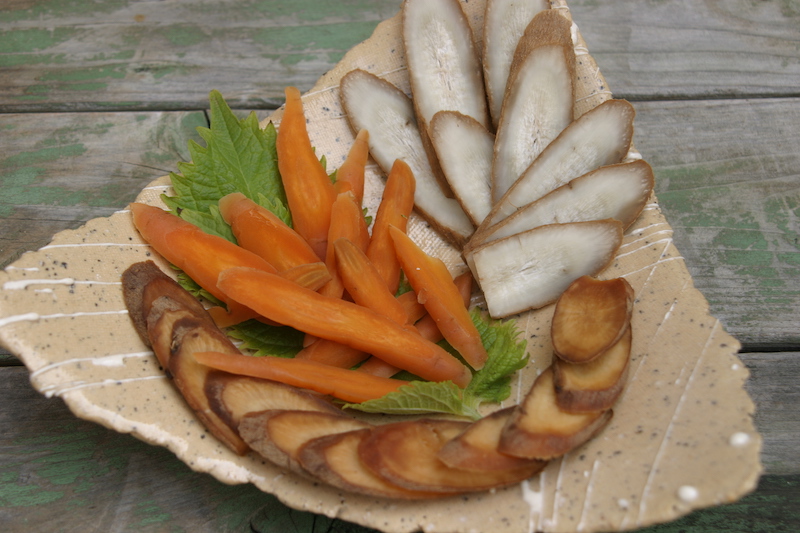
For the nuka bed:
1 pound nuka (brown rice bran)
2 cups purified water
2 to 4 tablespoons sea salt
2-inch square piece of kombu kelp (5cm)
one cup “starter” vegetables (carrots, cabbage, daikon, etc.), coarsely chopped
To make the nuka bed:
1. The first batch of nuka doko is very important in making nuka pickles. In a large skillet over medium-high flame., dry roast the bran (nuka) until the color changes slightly and the smell of bran intensifies. When evenly roasted, turn off the heat and allow it to cool.
2. In a small saucepan, boil the water. Add the sea salt and stir to combine. Add kombu, turn off the heat and let it cool.
3. Transfer cooled-off nuka to a ceramic crock, wooden barrel or enamel container. Add the kombu water mixture. Using your hands, gently combine the ingredients to form the nuka doko, or basis of the brown rice bran pickle bed.
4. Add chopped starter vegetables (dry them with a kitchen towel to take moisture out) which help to stimulate the fermentation process. Cover the crock with a clean cotton cloth and allow it to sit overnight.
5. Mix the nuka by hand once daily for the next 3 to 5 days. After this time, remove and discard the starter vegetables (I put them in the compost). The nuka doko is ready to make your delicious pickles.
6. Make sure vegetables (dry them with a kitchen towel to take moisture out) are ready to eat in a day, a couple of days to one week, depending on the kind of vegetables. Root vegetables and bigger sized vegetables take longer, and leafy vegetables and smaller sized vegetables take a shorter time.—For example, carrot- 2~3 days, red radish- 1 day, and small whole cucumber- 1 day.
7. Once you add vegetables, leave the crock in a cool dark area and mix vegetables daily.
If you cannot mix them daily, you can leave them in the refrigerator for a few days to a week. If you have kept it too long, the vegetables get more sour and salty, so make sure you rinse them with water.
If you are going out of town for a while, keep nuka in the refrigerator without vegetables. You can usually use the nuka bed to re-start making nuka pickles by adding a new roasted nuka to the old nuka bed to refresh.
Asazuke Napa Cabbage Pickle
Popular pickle with a refreshing taste for someone who loves crispy and light vegetables.
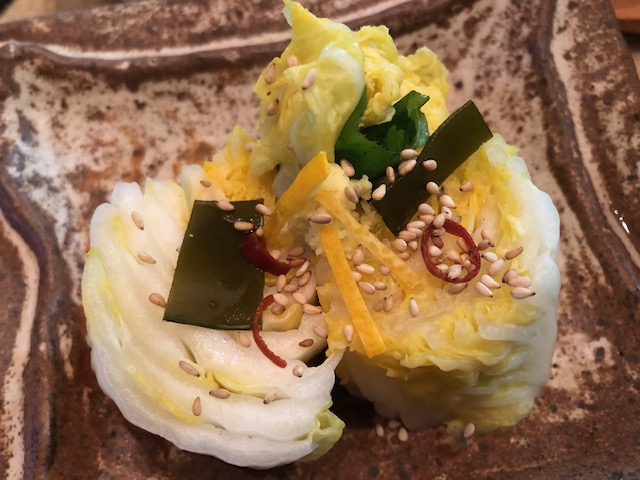
Ingredients
- 500 g napa cabbage (about half of whole)
- 80 g red radish (option)
- 20 g carrots (option)
Seasonings
- 10~20g sea salt 2~4% of the total weight of the vegetables
- 1 sheet kombu kelp 5cmx8cm/2”x 3.2″(Approximately 0.5 to 1% of the weight of the vegetables)
- 5 g ginger root shredded (optional)
- 2~4 dried red chili pepper without seeds sliced into rings to taste (optional)
- water (1/3 of the container)
- weight – Approximately 1.5 ~ 2 x of the weight of the vegetables
1. Gather all the ingredients.
2. *Cut napa cabbage: Make an incision about 5 cm (2 “) deep from the base of the napa cabbage and tear it into two pieces. It will make them not come apart. Furthermore, insert a kitchen knife in the same way, tear it apart, and divide it into four pieces. If the nap cabbage is large, you can split it into 6 to 8 pieces.
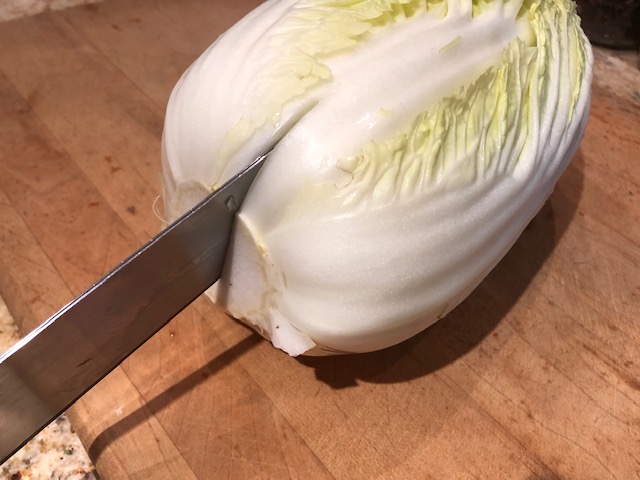
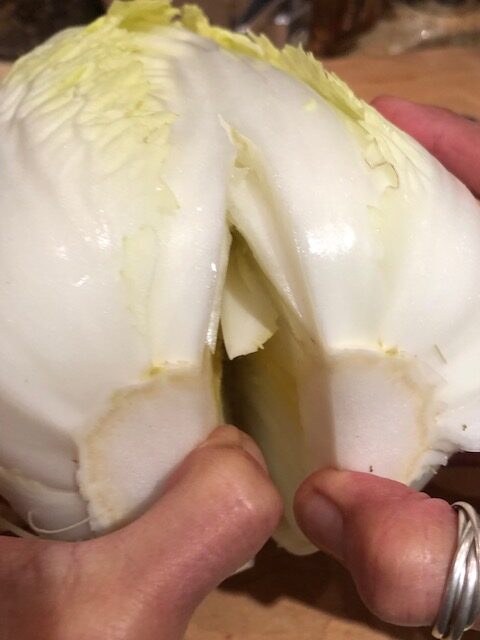
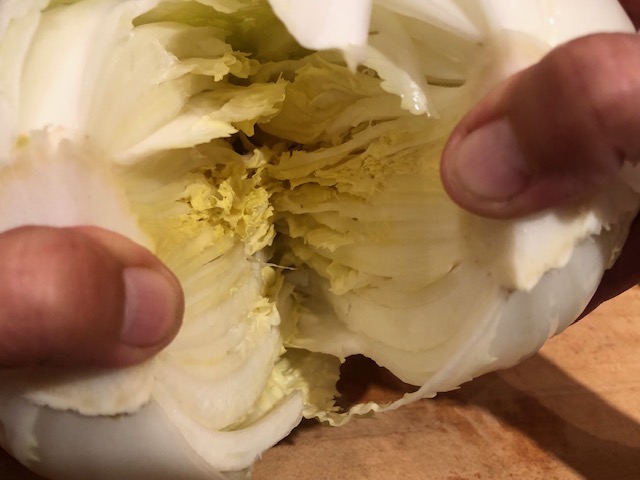
3. Add water to about 1/3 of the capacity of the pickle’s container and add salt to dissolve.
4. Arrange the cabbage in the same direction. If you need to layer the second ones, put half the salt on the first layer and sprinkle red chili pepper and kombu. Place the remaining napa cabbage in the opposite direction, place them in the second row, and sprinkle with the remaining salt. Press it firmly with your palm while applying it, which helps water rise easily.
5. Put a drop lid on it and use weight (I use big river rocks) to press.
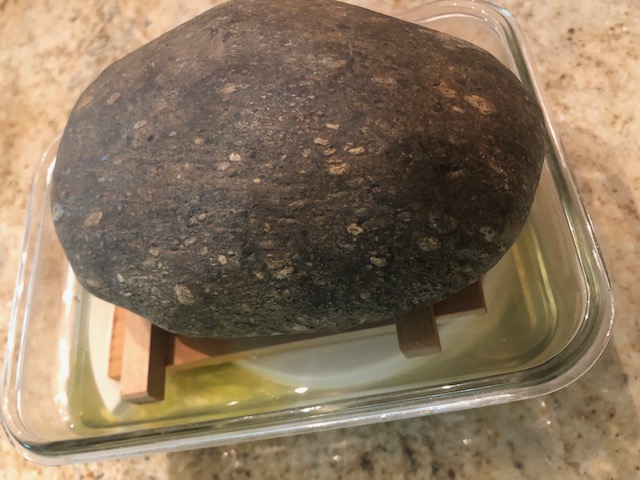
Cover with a thin cotton cloth and leave it for 12 ~ 24 hours (in colder times, leave it for 24~48 hours)
6. When you’re ready to eat, take out just the portion you’re going to eat, squeeze out the juice, rinse with water and squeeze it again.
7. Cut into bite-sized pieces before serving, and add **condiments if you like.
Note:
- Cut napa cabbage: if you want the cabbage to pickle faster, cut it into small pieces, but you may lose the crispiness.
- * Condiments: If you like, add roasted sesame seeds and citrus juice, such as yuzu or lemon or zest, and grated ginger to make it even more delicious!
Soy Beans Sprout Quick Pressed Salad Style Pickle
It is not like your usual pickles – My mother made this more to my liking, crispy like a salad and less salty, so I could enjoy it as a child, and I still love it as a side dish.
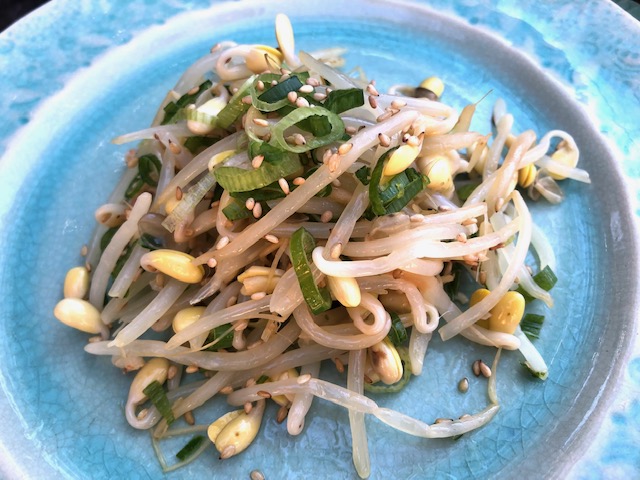
Ingredients
- 1 pound of soybean sprouts, rinsed and drained
- 1 teaspoon sea salt
- 1/2 cup water
- 1 green onion, chopped
- 1 teaspoon roasted sesame seeds
- 1~2 teaspoon toasted sesame oil
- 1~2 garlic clove, minced (option for people who eat meat/fish)
- Place soybean sprouts in a pot. Add the salt and ½ cup of water and cover. Bring to a boil over medium-high heat for 5 minutes. Drain.
- Put the cooked soybean sprouts in a mixing bowl. Add green onion, sesame seeds, and toasted sesame oil and mix well by hand.
- Put a lightweight plate as a lid over it to press for one hour.
- Transfer to a serving plate.
- Serve as a side dish to rice.
My pickles class on March 5th.
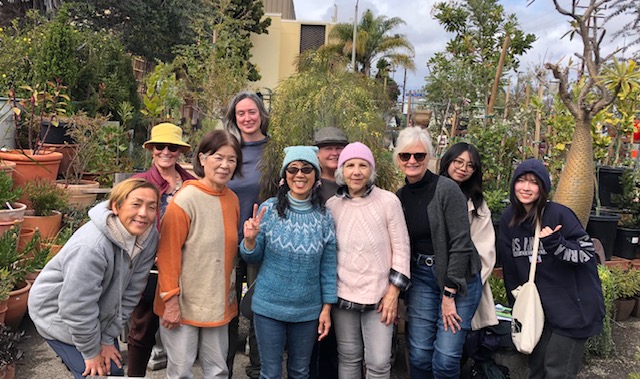
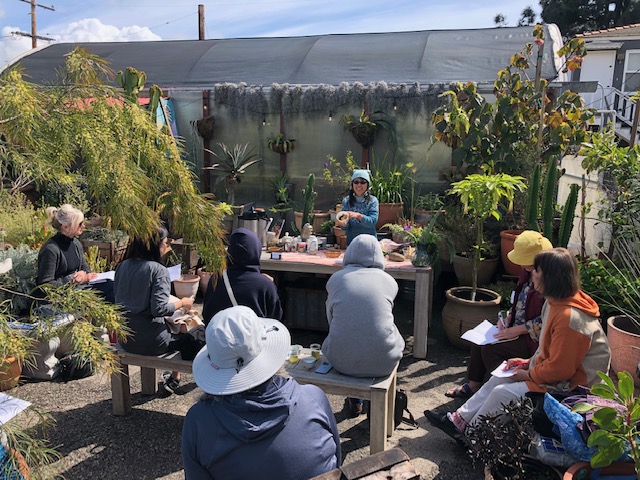
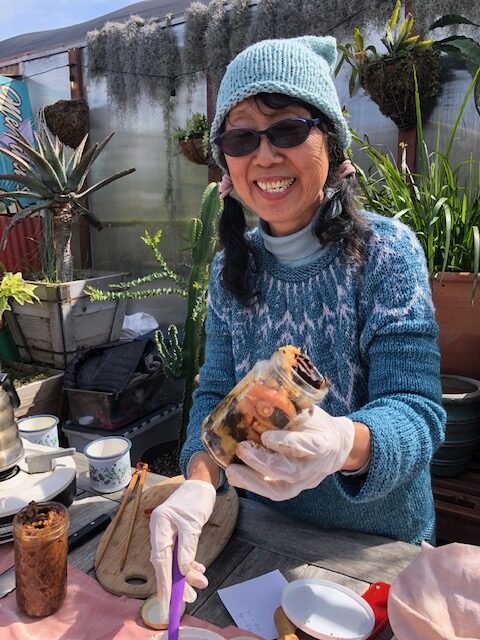
Enjoy your spring pickles!
Love, Sanae❤️
I wrote this article for “Macrobiotic Today” March 15th, 2023 Issue.
Subscribe for FREE: https://madmimi.com/signups/828f181e33dc41d0ae4d59bb5f4f2301/join








